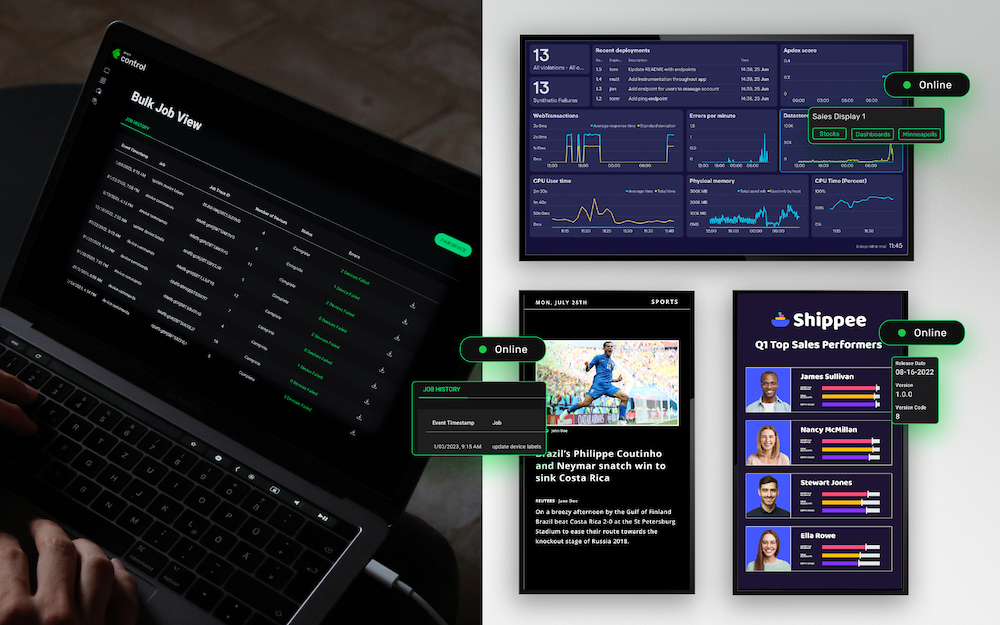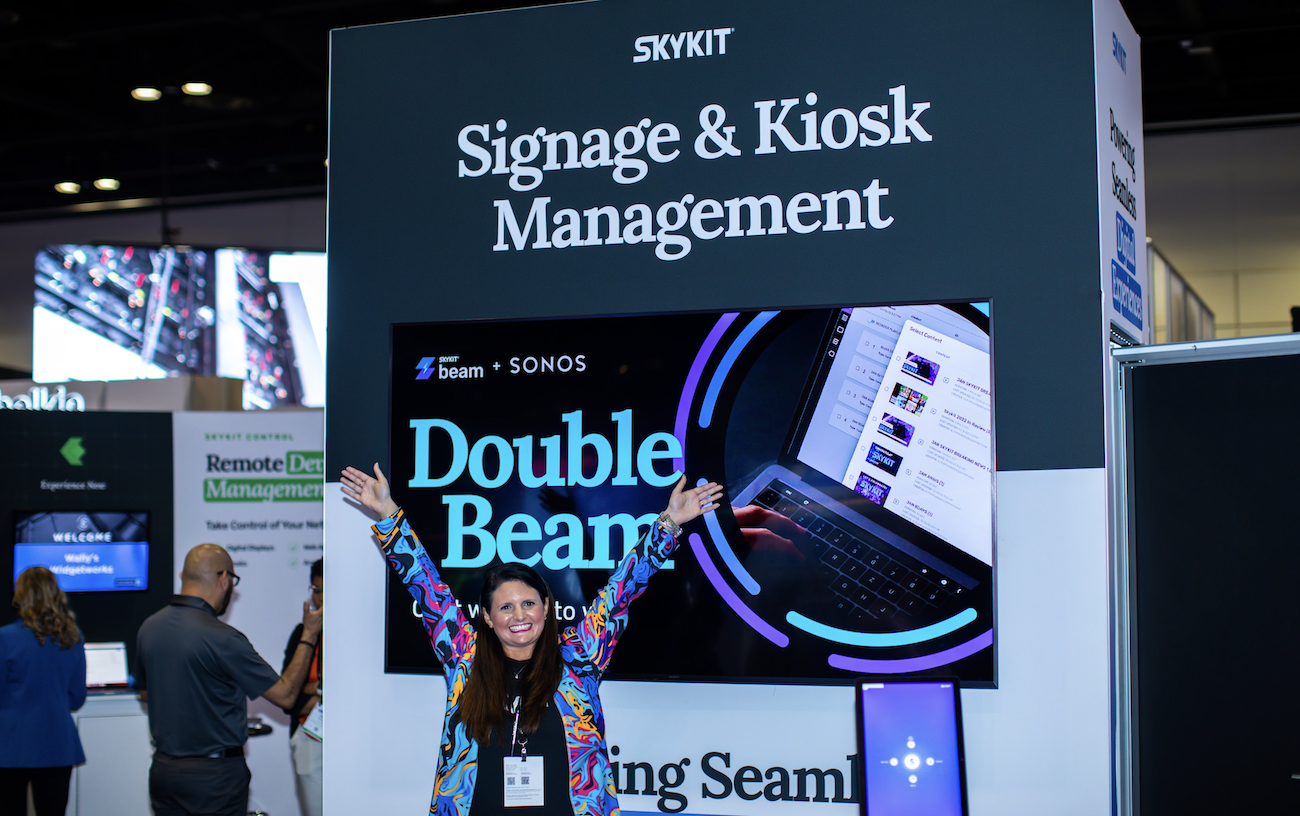Remote work was once unfeasible for many companies. But in the last year, thousands of employees began working partially or completely remotely. Video conference calls, real-time document editing, and messaging applications like Slack have made it significantly easier for team members to work together no matter where they might be located.
But effectively executing corporate communications to a dispersed workforce can still be tricky. If the HR department is trying to inform the whole company of changes to a particular benefit, for example, many organizations still operate sluggishly.
So what’s the best medium for corporate communications when your team is spread across the country – or the globe? Let’s take a look at the pros and cons of some of the most popular ways to communicate to a dispersed workforce.
1. Company Email
Email is perhaps the most common way of communicating in the workplace. In 2020, roughly 306.4 billion emails were sent and received each day!
Advantages
- Speed. No matter how far apart two people are, an email can go from one to the other in a matter of seconds. Problems can be addressed quickly and efficiently. Questions can be asked and answered almost instantly.
- Cost. Email is free to use, provided a person has access to a computer and the internet, which is standard for almost every workplace. You don’t have to pay for expensive software, postage, or other costs.
- Directness. Emails travel a direct route from sender to recipient, meaning there’s no middleman to confuse things. An email can go to a single person or to a large group, and replies go straight back to the person he or she is in contact with.
- Attachments. You can easily attach documents, spreadsheets, and other important pieces of information to an email.
Disadvantages
- Information Overload. Emails are great, but they can quickly get overwhelming. People can load emails with information, which is great for ease of communication, but not so fun for the person on the receiving end. No one likes wading through pages of words to find the point.
- Computers. Emails are confined to computers or mobile devices. This can make the method inconvenient for people who aren’t sitting in front of a desk all day. They might see things at the end of the day, but if something needs their immediate attention, an email might not cut it.
- Spam and Viruses. We’ve all had important emails magically end up in the junk folder for no apparent reason. Crucial info gets lost, deadlines get missed, and, even worse, one email carrying a virus can infect the whole building’s system if an unsuspecting employee opens it.
- “This Should Have Been a Meeting.” Some things are better explained in person, or at least in a setting where a true conversation can occur. Complex concepts or brainstorming sessions probably demand an in-person – or virtual! – meeting.
The Best Way to Utilize Email for Corporate Comms
Email is a useful communication medium when people are at their desks. This makes it less effective for companies in sectors like retail or manufacturing, where employees can’t easily check their inboxes while working. Still, it’s an effective way to keep people up to date.
If you’ve been using and loving email for corporate communications, keep at it. But if you’ve noticed key info is getting buried beneath 100 other unread emails, you may want to take a look at some other options.
2. Intranet
An intranet is an internal network for a company. Only employees have access to it, making it slightly more secure than email.
Advantages
- Employees Access. Only employees can access a company’s intranet. (Well, technically someone could from the outside, but it would take a lot more effort than most people are willing to put in!)
- More Capabilities. Intranets can handle a lot more than your standard email service can. They provide space to store information, instant messaging for easy communication, and details about a company and its policies.
- Social Connection. Intranets give employees the chance to connect with each other. In fact, 73 percent of activity on intranet servers is devoted to instant messaging and activity streaming.
Disadvantages
- Design. A successful intranet is not built in a day. It can be quite expensive to hire the designers and developers necessary to create and keep an intranet running.
- Time Consumption. Because intranets contain so much information, it can take a long time to find what you’re looking for – an employee handbook, the most recent work schedule, a company calendar, and so on. Employees can unintentionally waste a lot of time sifting through everything in their search.
- Disconnect. Employees can all too often feel disconnected and unengaged in their company, particularly after a year of fully or partially working from home. An intranet can decrease the opportunities for face-to-face interaction, causing employees to feel more like a part of a machine than a company.
Could Your Company Benefit From an Intranet?
A company intranet can be used very effectively if you put the time, and often money, into developing it. Some systems are confined to a single building, however, and can’t be used by people in more than one place. If it’s not tethered to one building, you have a very convenient way for people to connect.
If you already have or are thinking of developing a company intranet, make sure you utilize it to its full potential – and then get the word out! Your employees won’t benefit from resources and information hubs unless they know they exist and can easily access them. Check out these ideas for getting employees excited about intranet for some inspiration.
3. Physical Mail
Next to the lightning-fast communication methods that have been developed in the last decade, physical mail or posted announcements can seem clunky and largely unnecessary. But there’s something to be said for the physical medium.
Advantages
- Rarity. Because physical mail is becoming less common, it can make you feel kind of special when you get it. It shows that someone has put in the extra time and effort to create the mail and send it to you personally.
- Visibility. Putting up paper announcements in high-traffic areas throughout your facility is a great idea to gain some exposure. Think of a break room in a corporate office, where employees come and go at all times of the day. Pinning a notice on a bulletin board will get people’s attention.
Disadvantages
- Cost. If you’re sending mail to a large number of people or printing endless announcements, things can get pricey very quickly.
- Speed. There’s a reason email has all but replaced snail mail: it’s faster. So if it’s a question of speed, email is your best bet.
The Right Way to Leverage Physical Mail for Corporate Comms
Placing physical announcements in strategic spots allows you to reach employees without having to compete with the large number of emails in a person’s inbox. If your team is largely working from home, test out physical mailings like a quarterly bulletin – but don’t flood your employees with flyers! Keep things special by limiting the number of items you send out, and try to avoid any extremely time-sensitive sends. If you’d like some extra insurance, follow up a physical mailing with an email containing the relevant information.
4. Digital Signage
Digital signage is a distant cousin of the intranet. You can use it to display just about any kind of content across a network of screens. The screens don’t all have to be in the same building, which can be particularly helpful for a dispersed workforce. Even better, digital signage can be used for both advertising in public venues and communication in-house.
Advantages
- Instant, Widespread Reach. With the click of a button, you can update all of your screens with relevant information, reaching your entire workforce.
- Easy to Manage. Managing digital signage content can be simple, especially if you have a handy program like Skykit Beam to help you do so.
- Eye-Catching Content. The key to attention-grabbing content is keeping things simple, scalable (making sure it fits screens of different sizes without becoming hard to read), and fun. Use bright colors, graphs, or even images to ensure your content turns heads.
Disadvantages
- Limited by Screens. The information you choose to display will only show up on your chosen screens. If you experience some sort of technological malfunction, or a screen gets moved without your knowledge, people could miss key information.
- Fading Into the Background. Even the flashiest piece of content can start to blend into the background once employees see it enough. You can overcome this by updating your digital signage content so it’s always relevant.
Conquering Corporate Communications with Digital Signage
A digital signage network is a great way to keep lots of people who are far away from each other updated on company events, announcements, and successes. You don’t have to spend the time or effort designing a template on the intranet, and you don’t need to worry about your content getting buried in a full inbox.
If you’re looking to keep communications consistent across any number of offices or facilities, digital signage could be your new favorite corporate communication tool.
How Will You Keep Your Dispersed Workforce Informed?
Ultimately, the right channel for corporate comms will depend on your company. What works best for you and your team might not work as well – or at all! – for another organization.
What strategies have you used to communicate to your dispersed workforce this year, and which ones have you liked best? We’d love to hear from you! And if you have any questions about digital signage, don’t hesitate to reach out.
Originally published November 2015. Last updated July 2021.



